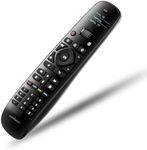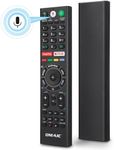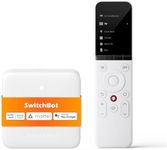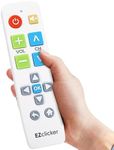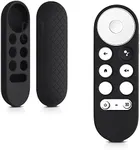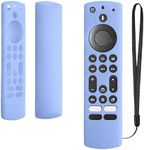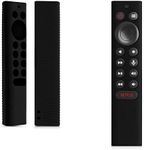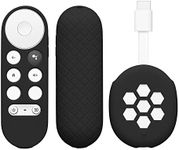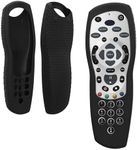Buying Guide for the Best Universal Remotes
Choosing the right universal remote can greatly simplify your home entertainment experience. A universal remote is designed to control multiple devices, such as your TV, DVD player, sound system, and more, all from one single remote. To find the best fit for you, consider the key specifications and how they align with your needs and preferences.CompatibilityCompatibility refers to the range of devices and brands that the universal remote can control. This is important because you want to ensure that the remote can operate all your existing devices. Universal remotes typically list the brands and types of devices they support. If you have a mix of older and newer devices, look for a remote with broad compatibility. For users with common brands and newer devices, most universal remotes will suffice. However, if you have specialized or less common equipment, you may need to check the compatibility list more carefully.
Ease of SetupEase of setup is about how simple it is to program the remote to work with your devices. This is crucial because a complicated setup process can be frustrating and time-consuming. Universal remotes often come with different setup methods, such as manual code entry, automatic code search, or using a companion app. If you prefer a straightforward setup, look for remotes with automatic code search or app-based setup. For those who are comfortable with technology, manual code entry can offer more control and customization.
Number of DevicesThe number of devices a universal remote can control simultaneously is an important factor. This specification tells you how many different devices you can program into the remote. If you have a simple setup with just a TV and a sound system, a remote that controls 2-4 devices will be sufficient. For more complex setups with multiple components like gaming consoles, streaming devices, and Blu-ray players, look for remotes that can handle 6 or more devices.
Button Layout and DesignButton layout and design refer to the physical arrangement and feel of the buttons on the remote. This is important for ease of use and comfort. A well-designed remote will have intuitive button placement, making it easy to find and press the right buttons without looking. Consider remotes with backlit buttons if you often use your devices in low-light conditions. If you prefer a minimalist design, look for remotes with fewer, well-organized buttons. For users who need quick access to many functions, a remote with more buttons and customizable options might be better.
Smart FeaturesSmart features include additional functionalities like voice control, touch screens, and integration with smart home systems. These features can enhance convenience and provide a more modern user experience. If you enjoy using voice commands or have a smart home setup, look for remotes with voice control and smart home integration. For those who prefer traditional remotes, these features might not be necessary, but they can still offer added convenience.
Battery LifeBattery life indicates how long the remote can operate before needing new batteries or a recharge. This is important for uninterrupted use and convenience. Remotes with longer battery life reduce the hassle of frequent battery changes. If you prefer a remote that you don't have to worry about charging often, look for models with extended battery life or rechargeable options. For occasional users, standard battery life might be sufficient.

